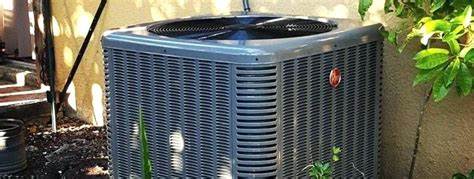A/C 101 - How Central Air Conditioning Systems OperatePosted by Renwick on April 9th, 2021
Can you imagine life without air conditioning? Sweltering heat waves that can melt the rubber on your shoes, cook an egg on the dashboard of your car, and make it nearly difficult to have a good night's rest-- sounds miserable! Let's face it, life without A/C would not be the very same. Did you know, that prior to the 20th century, ice was actually gathered for refrigeration? It was cut into 1-ton blocks, provided throughout the nation and used in 'ice-boxes' to keep food fresh. The good news is today, refrigeration has actually been dramatically improved given that its introduction in 1834. By understanding how your house's A/C system works, you'll be able to make it run better and longer, and if it needs to break throughout the pet days of summer, more positive discovering a replacement. What is Central Air? Considering that the 1960s, main air conditioning systems have actually been the most common style of cooling in America. Finest identified by the condenser system outdoors and ducts bring cool air throughout the house, a central air is sometimes described as a "split-system" because the indoor and outside elements are separated. How It Functions Similar to how a sponge soaks up water, central air conditioning conditioners absorb the heat from inside the house and eject it outside through a procedure called "the refrigeration cycle." It's easy to comprehend how an a/c unit works as soon as you see how the parts run together. Parts of an A/c System Split into 2 parts; a system will contain an outside condenser system (listed below) and a coil housed on top of the heating system or inside air handler. The outdoor condenser, which does the majority of the work, operates in tandem with the air handler/furnace that distributes the conditioned air into rooms of your home. The Refrigeration Cycle The cooling process begins when the thermostat finds the interior temperature level has actually risen above the setpoint. It indicates the control panel in the air handler and goes into action. 1) The internal blower draws in the hot, damp indoor air from the return ducts into the air handler/furnace cabinet to be conditioned. 2) Filthy air going into the cabinet initially goes through an air filter that traps dirt and debris. 3) The clean air then travels through the evaporator coil. Using metal fins to increase its area, the evaporator coil extracts heat and moisture from the warm air as the air travels through it. The tidy, cool air is distributed throughout the home. 4) A pair of copper tubes including refrigerant, called a Line Set, link the indoor coil with the outdoor condenser. 5) The condenser dissipates the heat caught inside the line coming from the evaporator coil by biking it through its coils where a fan at the leading presses air to speed up the procedure. The refrigerant is then compressed and travels back to the indoor evaporator coil, where the cooling process continues. HVAC Cheat Sheet It's an excellent idea to acquaint yourself with the technical language used by HVAC professionals to comprehend your system when it concerns making repair work or purchasing a new unit. HVAC - Stands for heating, ventilation, and air conditioning. This acronym is utilized to classify all equipment used to regulate air temperature, humidity, and air quality. Split-System - In recommendation to parts of the system operating both inside your home and outdoors. In a split system, the condensing unit is discovered outside. BTU - British Thermal Systems - a measurement of how much heat can be removed from the air in an hour. Lot - A measurement that describes the cooling capability your system can supply under regular conditions. 1 Ton is equal to around 12,000 BTU's. Tons are typically used when sizing a system for your house, which can be determined based upon the square video footage needed to be cooled or warmed. Unmatched Proficiency Easily, the heater, air conditioning, and electrical systems all work automatically, without us needing to fumble around in the basement or worse, a hot attic. Until something goes incorrect. Understanding your a/c system might appear overwhelming at first, but when you have the basics down, you'll be able to understand not only air conditioning contractors edmonton how your system works, however also understand lingo to make purchasing a replacement simple. Like it? Share it! |



